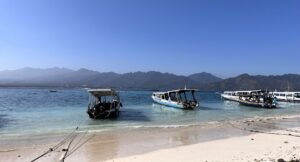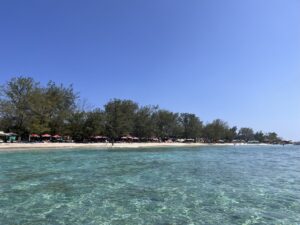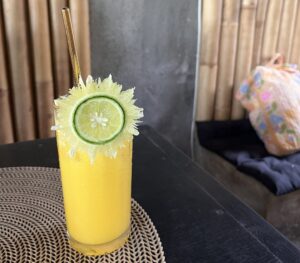Let’s start with some context as to why Malacca (or Melaka in Malay) was so coveted in the age of maritime exploration.
Malacca was a strategic city due to its privileged location on the Straits of Malacca, which provided access to a direct trade route between India and China. This attracted merchants from China, Arabia, India, and Europe, who were regular traders passing through its port.
In 1511, the city was conquered by the Portuguese commander Afonso de Albuquerque, enabling Portugal to control the trade routes between Europe and Southeast Asia at that time.
In 1641, the city was captured by the Dutch, and in 1795, it was taken by the British. Yet, the ruins of the Portuguese construction from that era still remain today.
In 2008, Malacca’s historic centre was declared a UNESCO World Heritage Site for its rich cultural and architectural heritage, showcasing a fusion of various influences like Malay, Chinese, Indian, and European.
There’s no shortage of things to see and do, and all the places mentioned here are easily accessible on foot from Malacca’s historic centre.
I really enjoyed Malacca, strolling through the streets and seeing its murals on every corner, the cafés, the colourful facades, in an atmosphere that felt like you’re in a village where you can walk everywhere. I liked Malacca better on a Monday, with a quieter vibe and fewer tourists compared to the day before.
So, here are some suggestions below on what to visit in Malacca.
A´Famosa
The A’Famosa fortress was built in 1512 by Afonso de Albuquerque to defend the city against its attacks from his enemies. When the Dutch captured the city in 1641, the fortress was renovated and inscribed with the coat of arms of the Dutch East India Company. During the English rule of Malacca in 1795, the fortress was virtually destroyed, with only one of its gates, the Santiago Gate, spared.
Climbing a steep flight of steps next to the Santiago Gate, you’ll reach the ruins of what was once St. Paul’s Church, offering views of the city and the Malacca Strait.
Around these ruins, you’ll find souvenir stalls and street artists, often with live music.
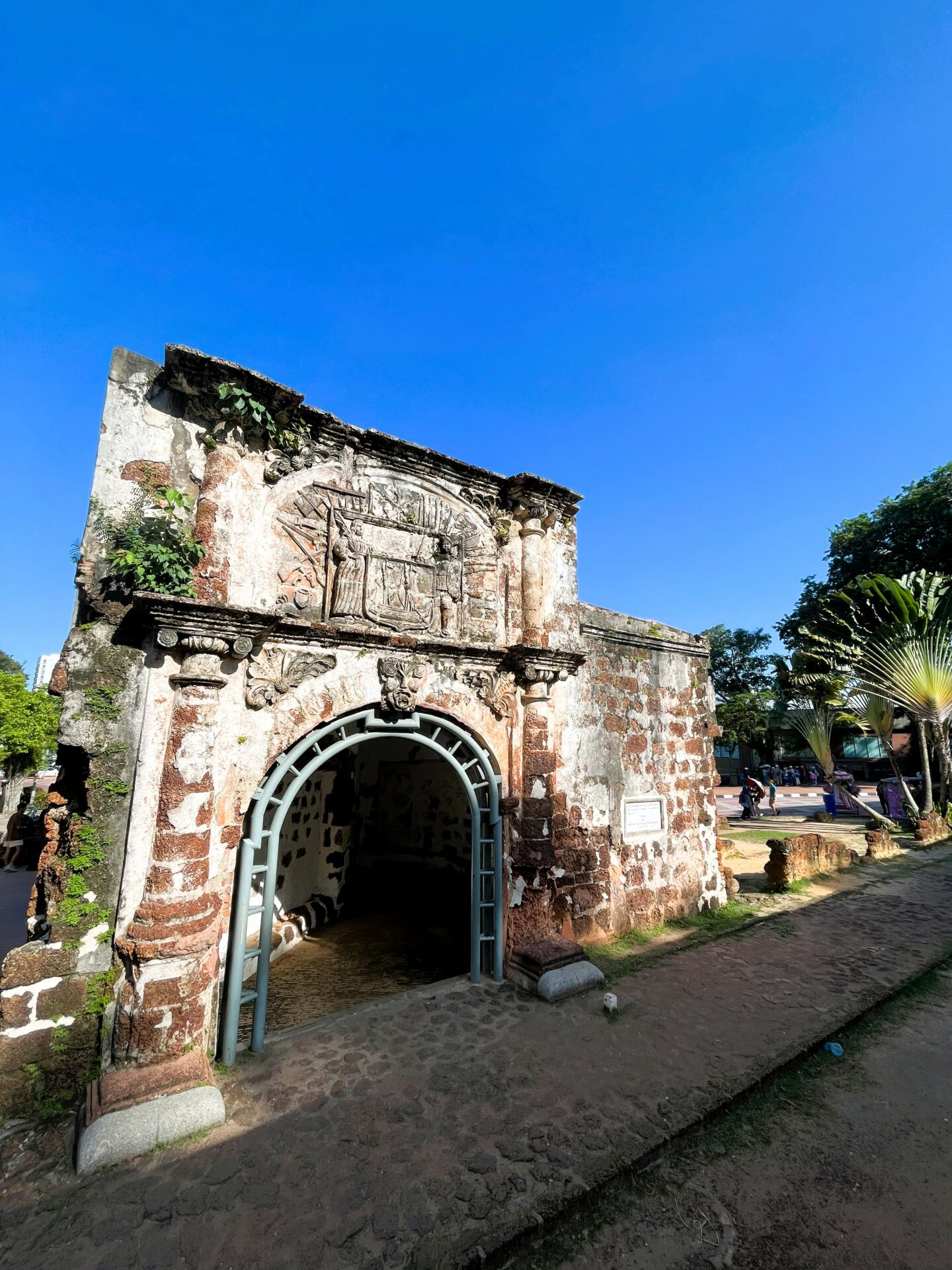
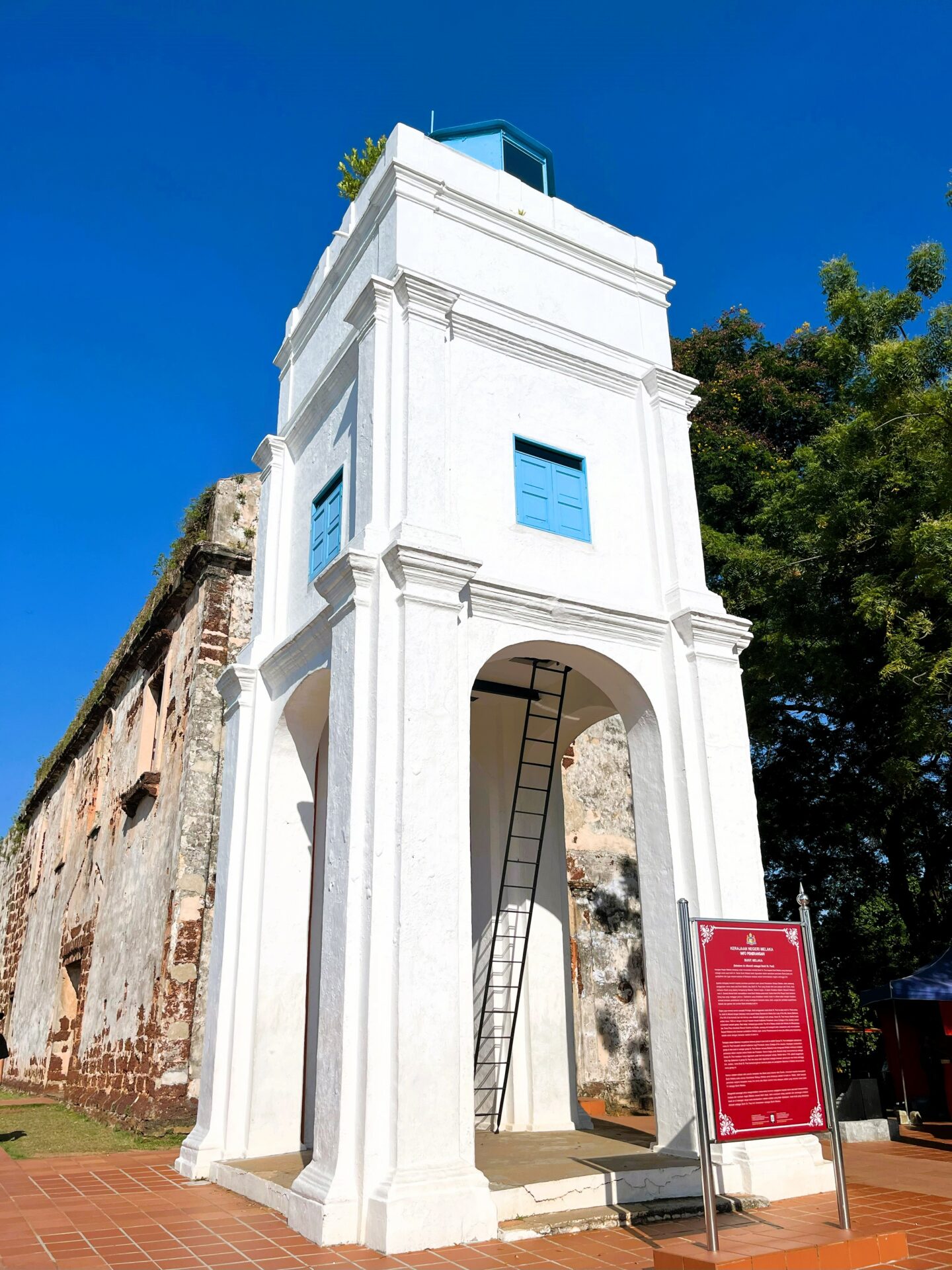
Dutch Square (Praça Holandesa)
Also known as the Red Square, as you can easily tell from the photo below.
It’s in the heart of Malacca, where you can see two main buildings, the Christ Church and the Stadthuys (Governor´s House), showcasing Dutch colonial architecture.
The Christ Church is still in use, while Stadthuys now houses the Museum of History and Ethnography, displaying artifacts and exhibits related to Malacca’s history.
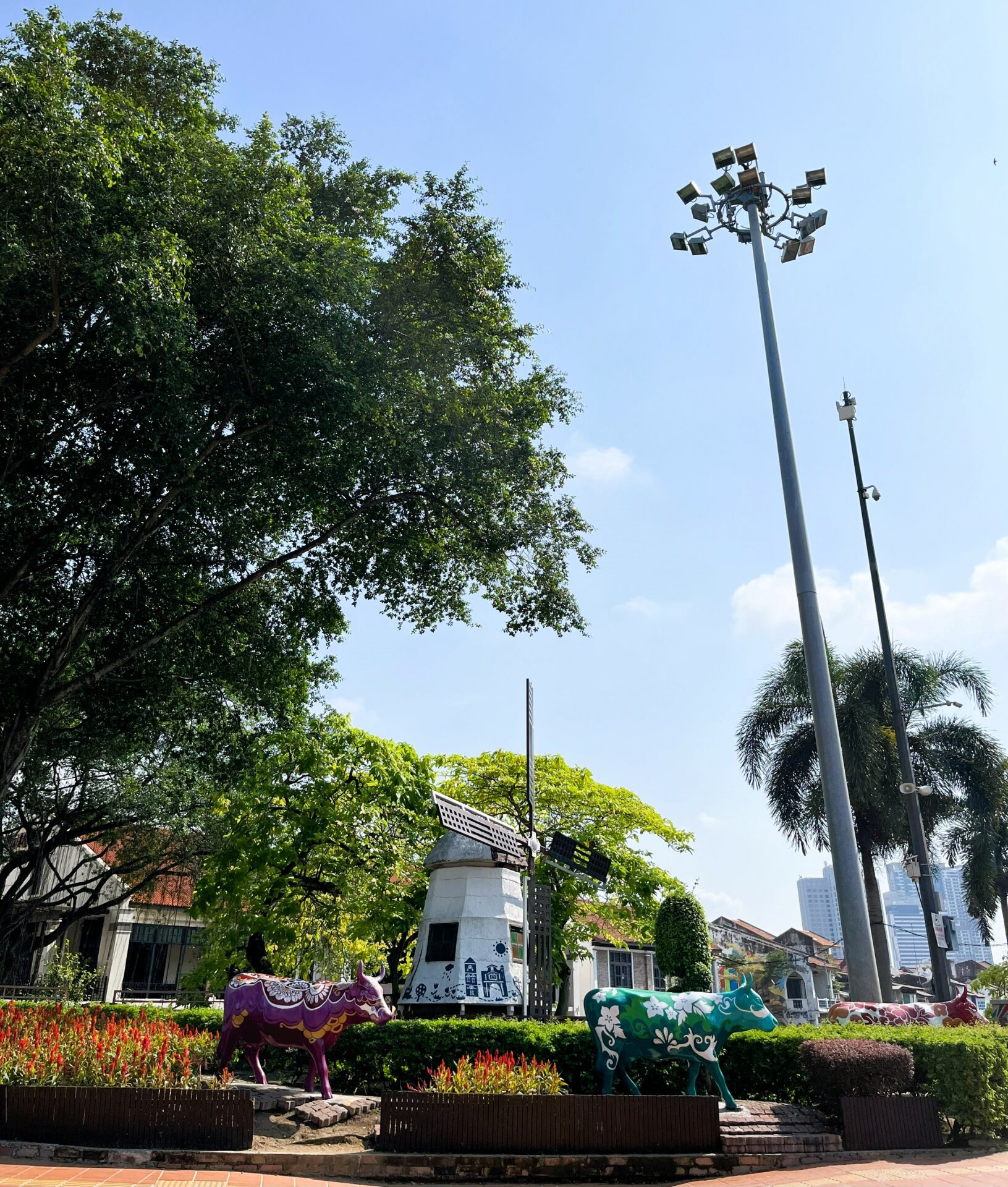
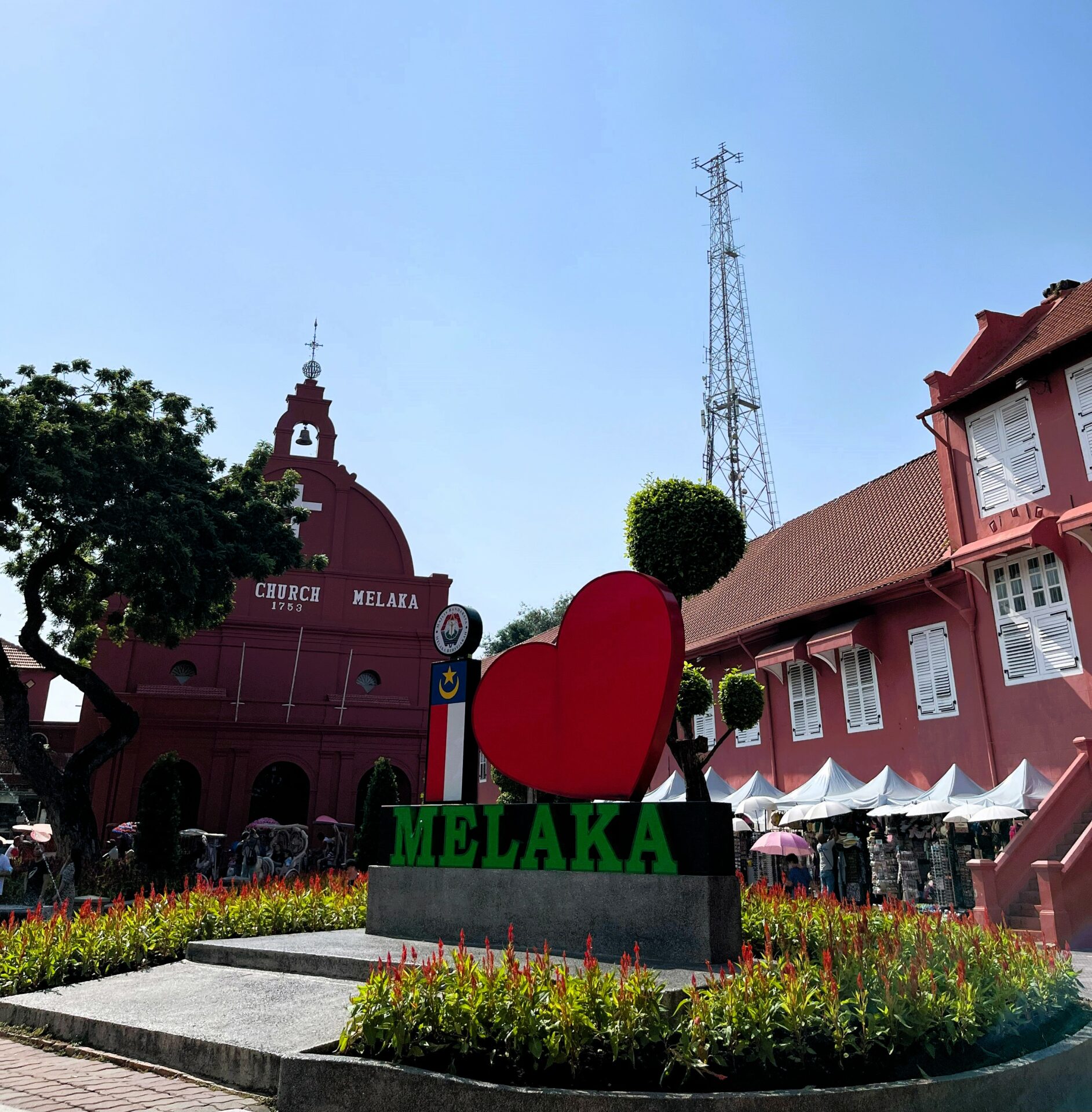
Melaka River Cruise
The Malacca River cruise is definitely worth it. We did it during the day, and it allowed us to see the dozens of amazing murals along the riverbank. At night, it must be different and equally interesting with the city lights.
More information about the river cruise here.
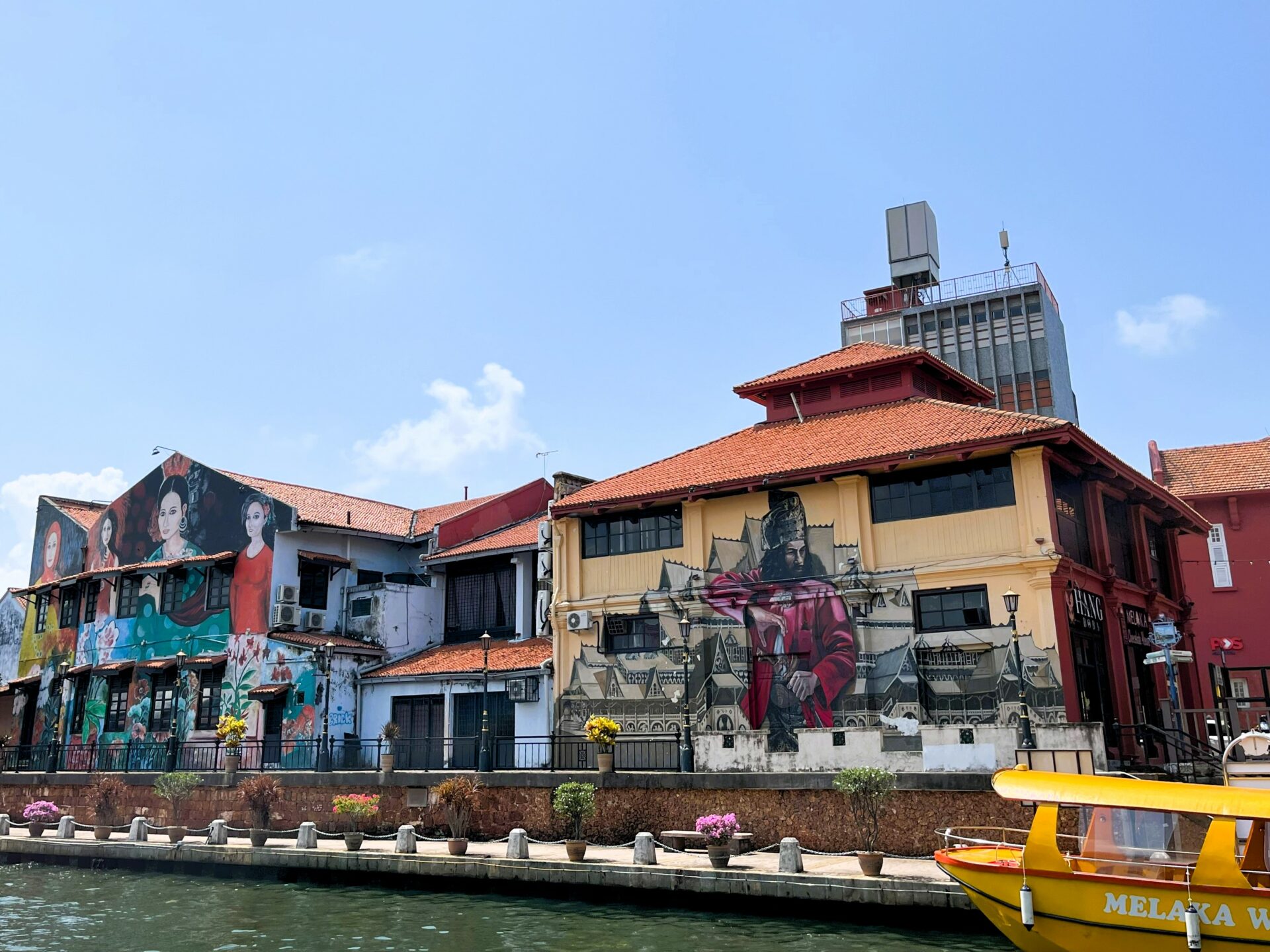
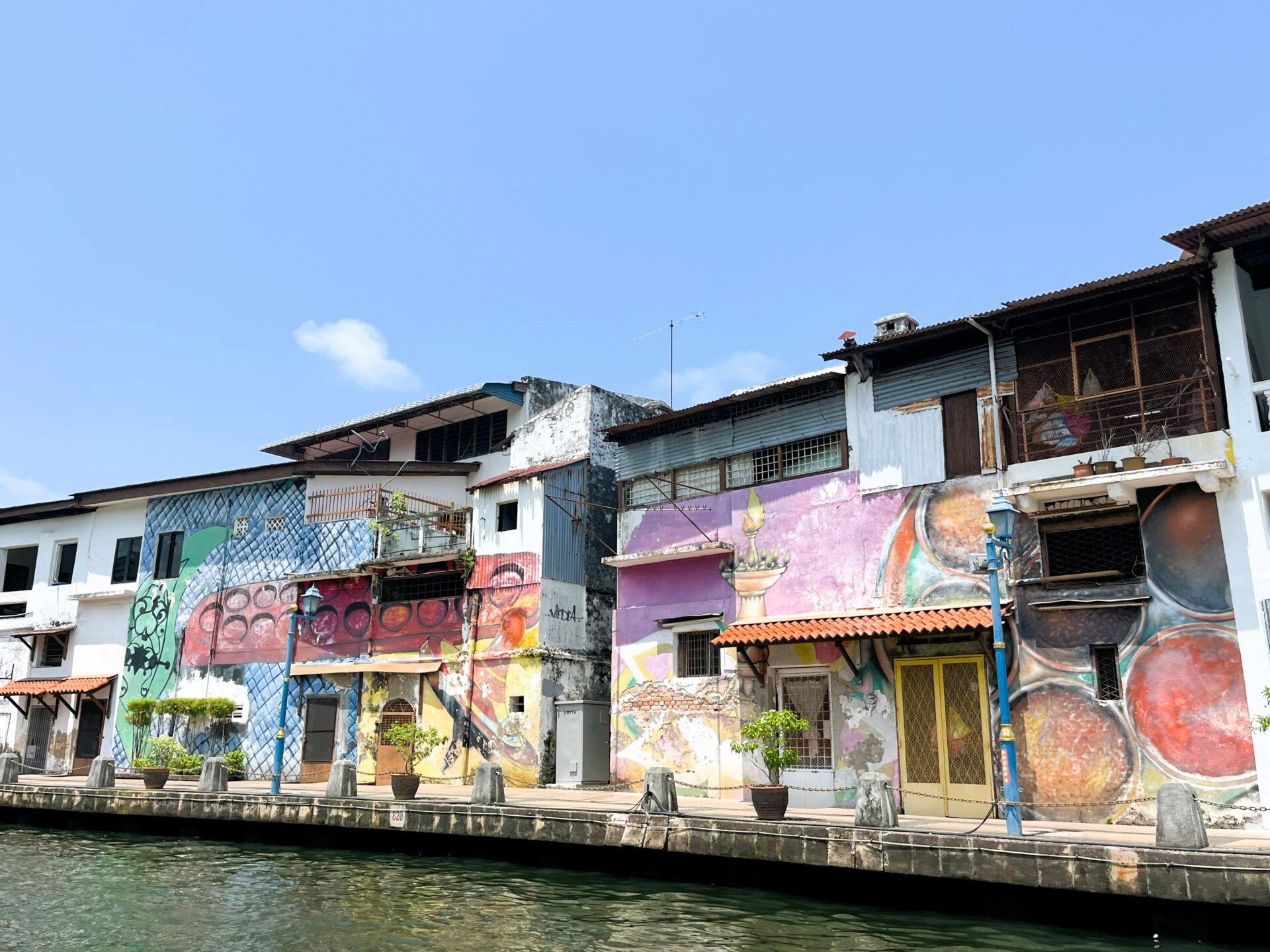
If you look closely at the river, you’re likely to spot a few monitors lizards swimming, just like the one in the picture below!
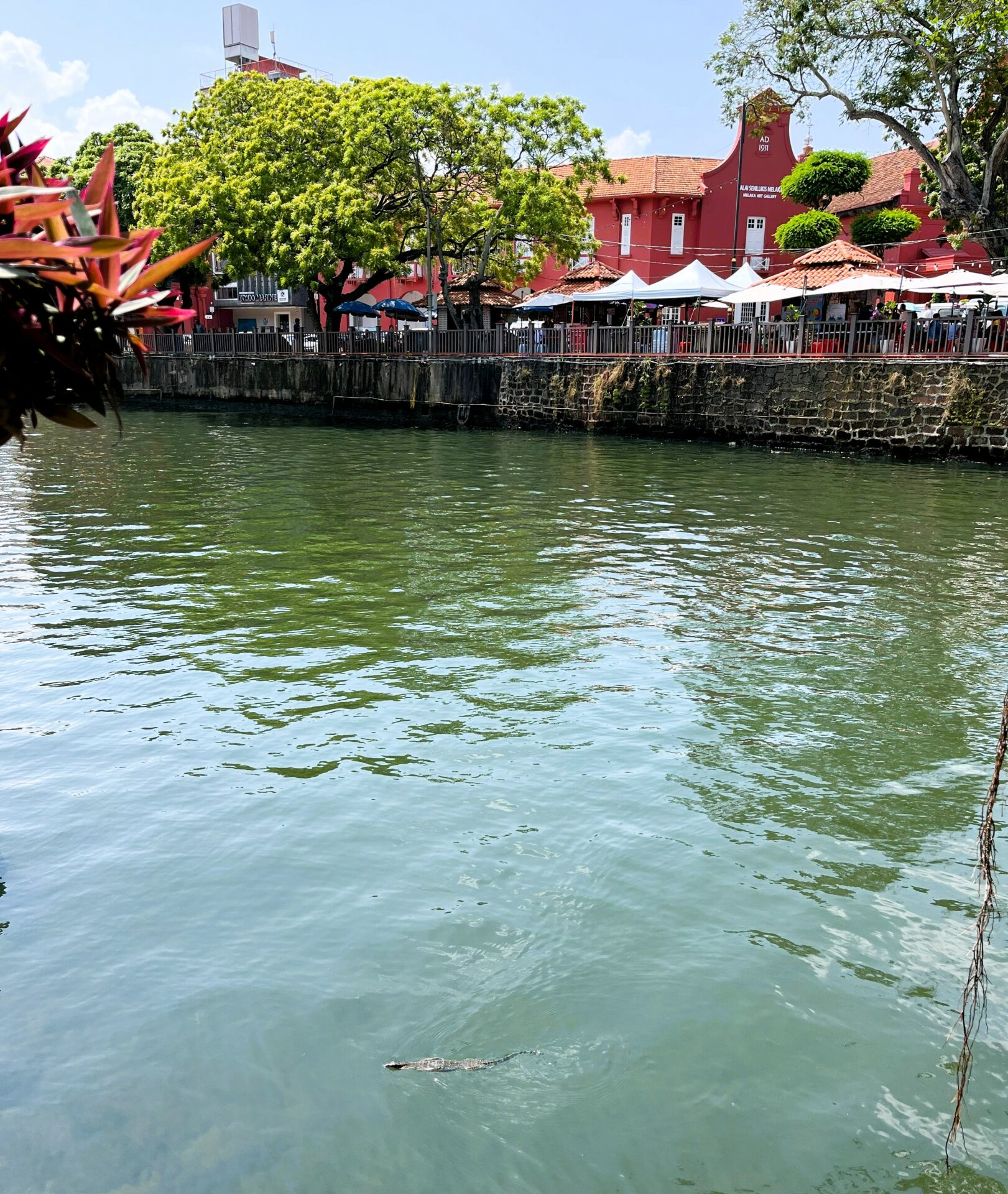
Baba Nyonya Heritage Museum
To my regret, we didn’t go there on the day we arrived (Sunday) and then I realized that it was closed on Mondays, so I missed the chance to visit this museum.
The house that now hosts the museum was inhabited by four generations of the same family, who opened it as a house-museum in 1985 to preserve the history of Peranakan culture.
For more details on this museum, click here.
Melaka Sultanate Palace Museum Museum
The Melaka Sultanate Palace Museum is a reconstruction of a 15th-century palace, originally built during the reign of Sultan Mansur Shah.
It’s interesting to learn more about Malay royalty, the history of the city of Malacca, and especially to understand the dynamics of the trade that connected Malacca to different parts of the world, including China, the Middle East, and Europe. These exchanges shaped the history of that period.
It’s located next to the A’Famosa fortress, and can be seen on a quick visit, or if you have more time, you can also wander through the palace gardens.
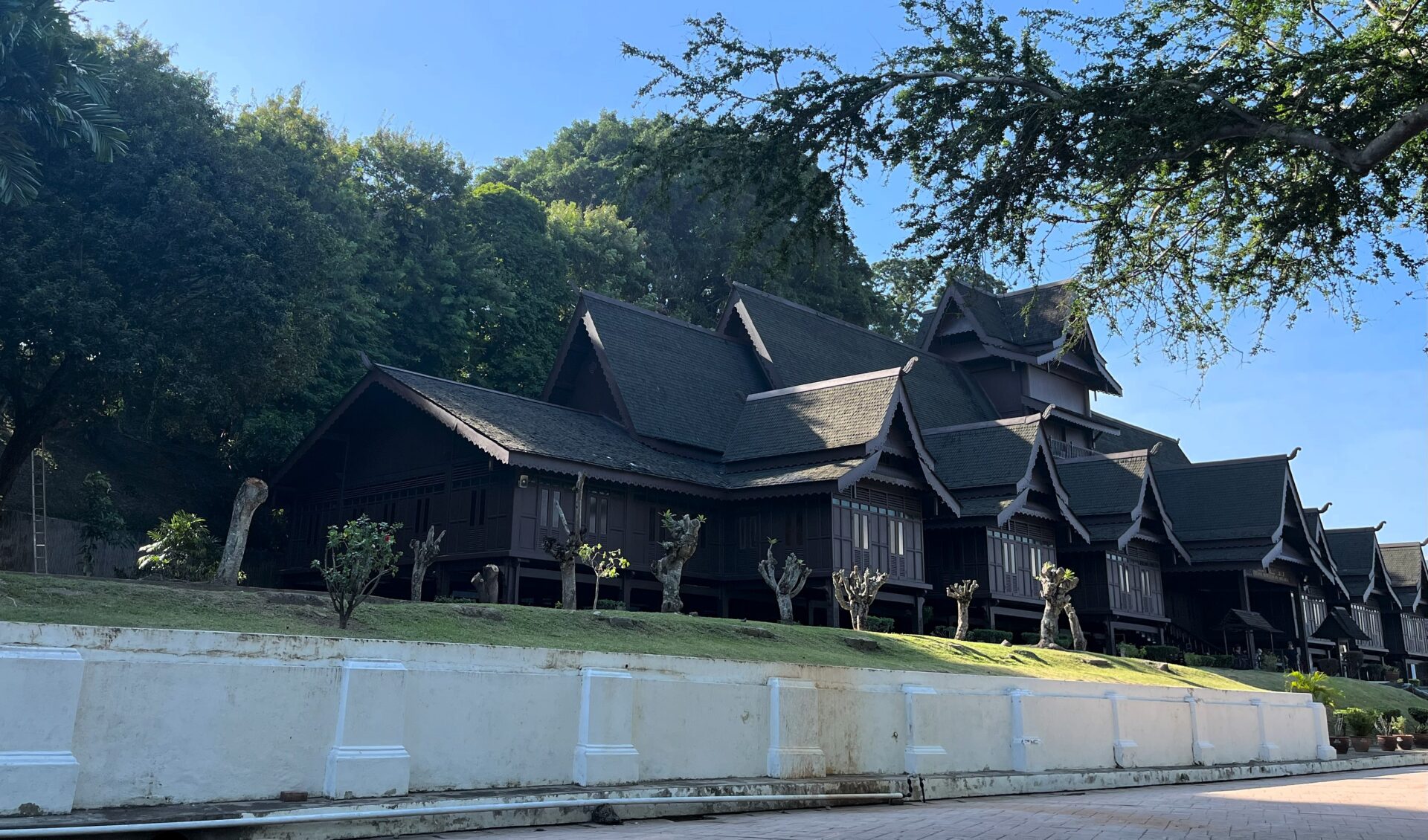
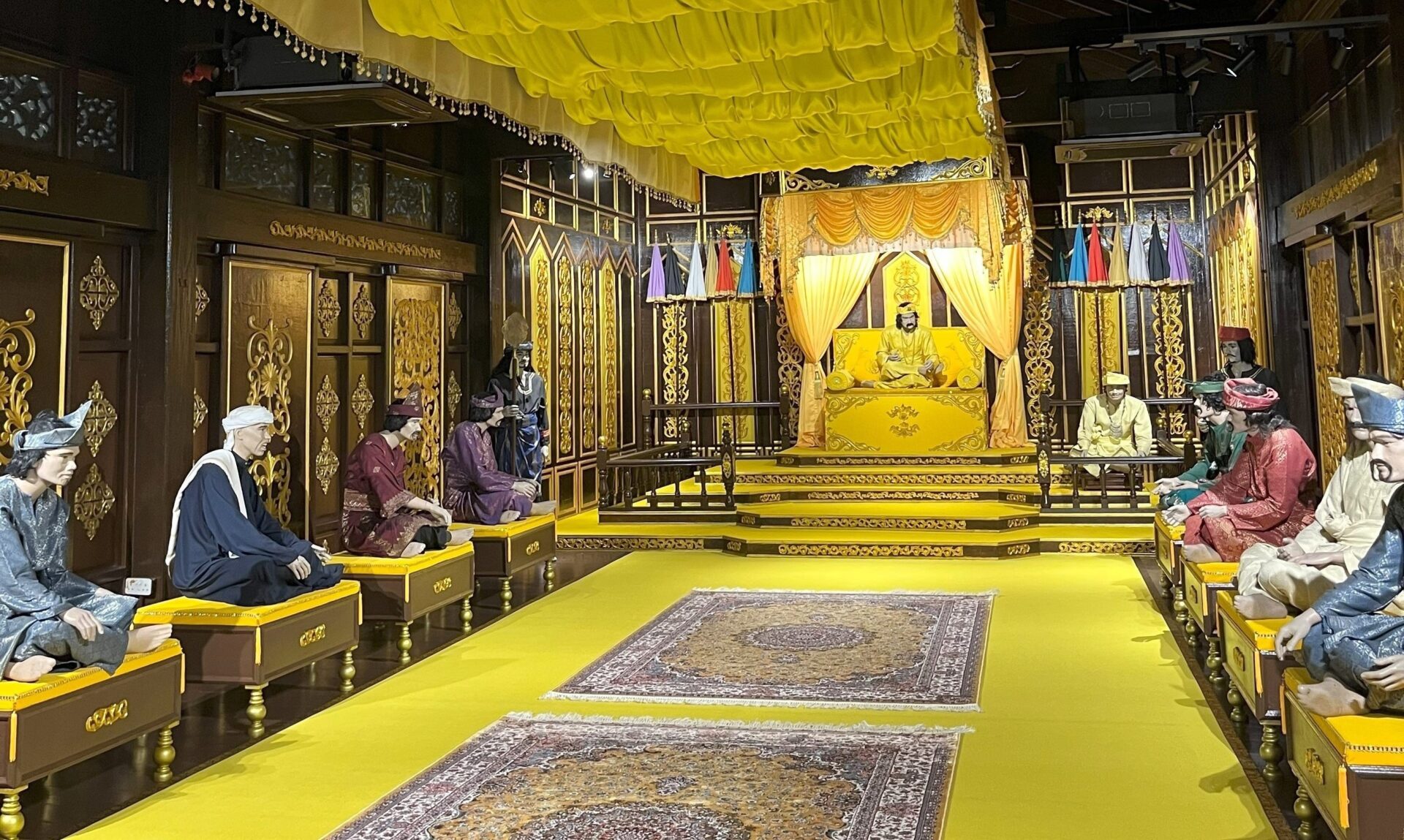
Trishaw ride
I would have initially skipped this trishaw ride (a three-wheeled bicycle), but Maria Rita insisted that we go (she was SOOO TIRED of course), so we went along.
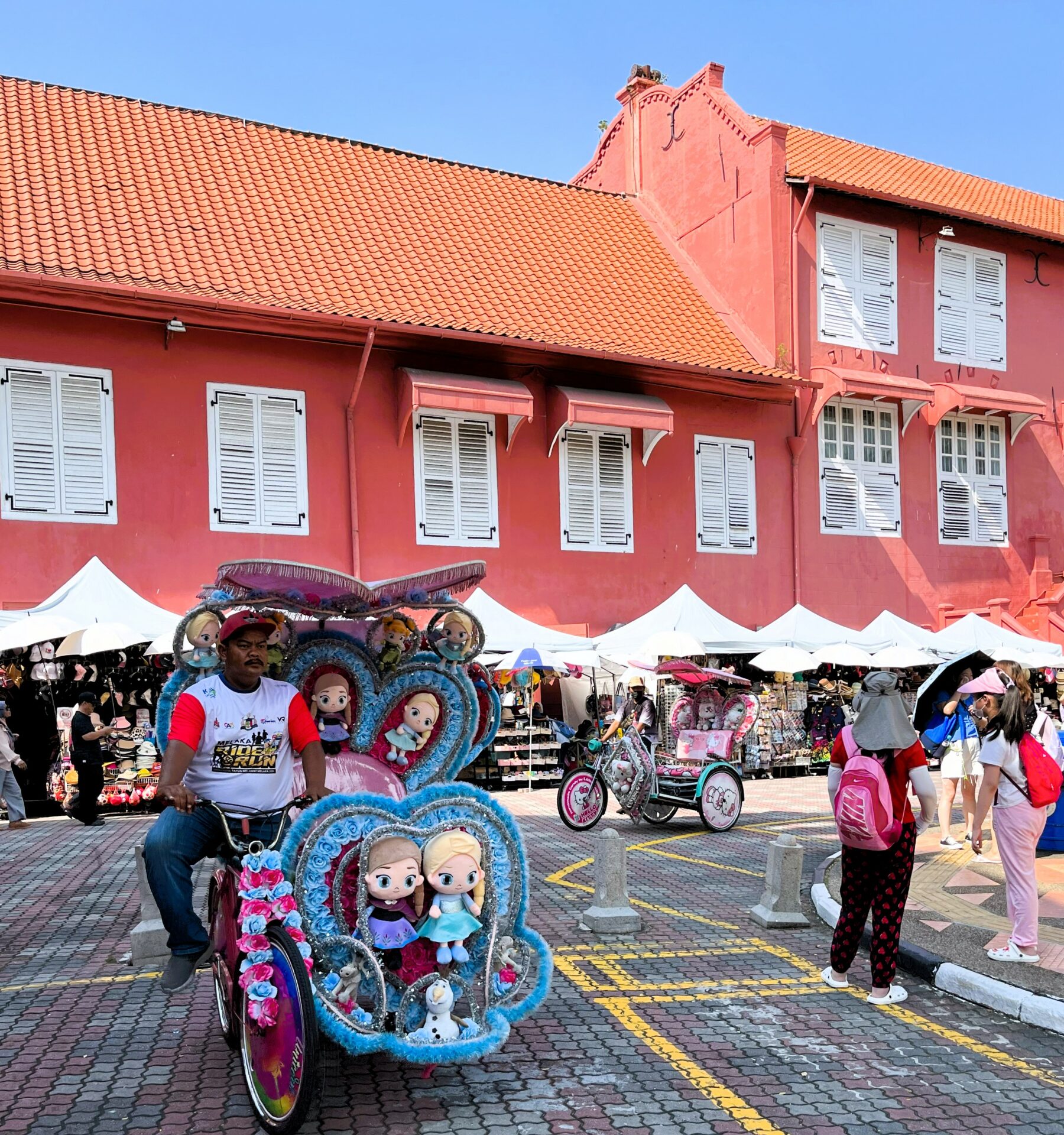
We didn’t end up going very far from the city centre (different from what I thought was agreed upon with the driver), but with the scorching heat, it was hard to ask him to pedal more!
One of the stops on this tour was the Hotel Puri (see also the post Hotel in Malacca/Melaka), and it was well worth it because I wouldn’t have otherwise remembered to go there.
Another stop we made was at the so-called Harmony Street, where three places of worship from different religions live side by side in the same street: the Buddhist Cheng Hoon Teng Temple, the Hindu Sri Poyyatha Vinayaga Moorthy Temple, and the Muslim Kampung Kling Mosque.
We also made a few other stops, so in the end, I think it was worth it!
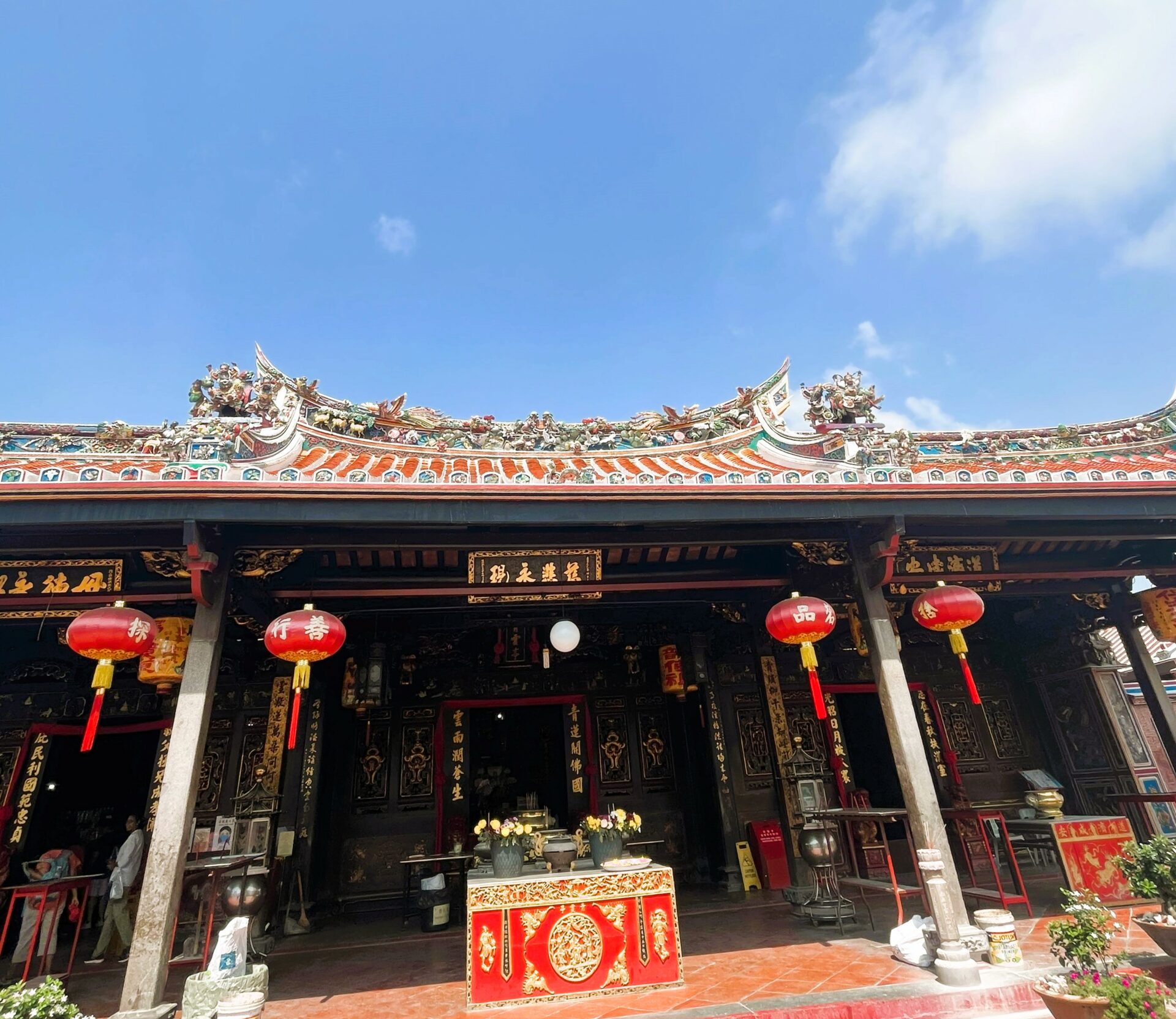
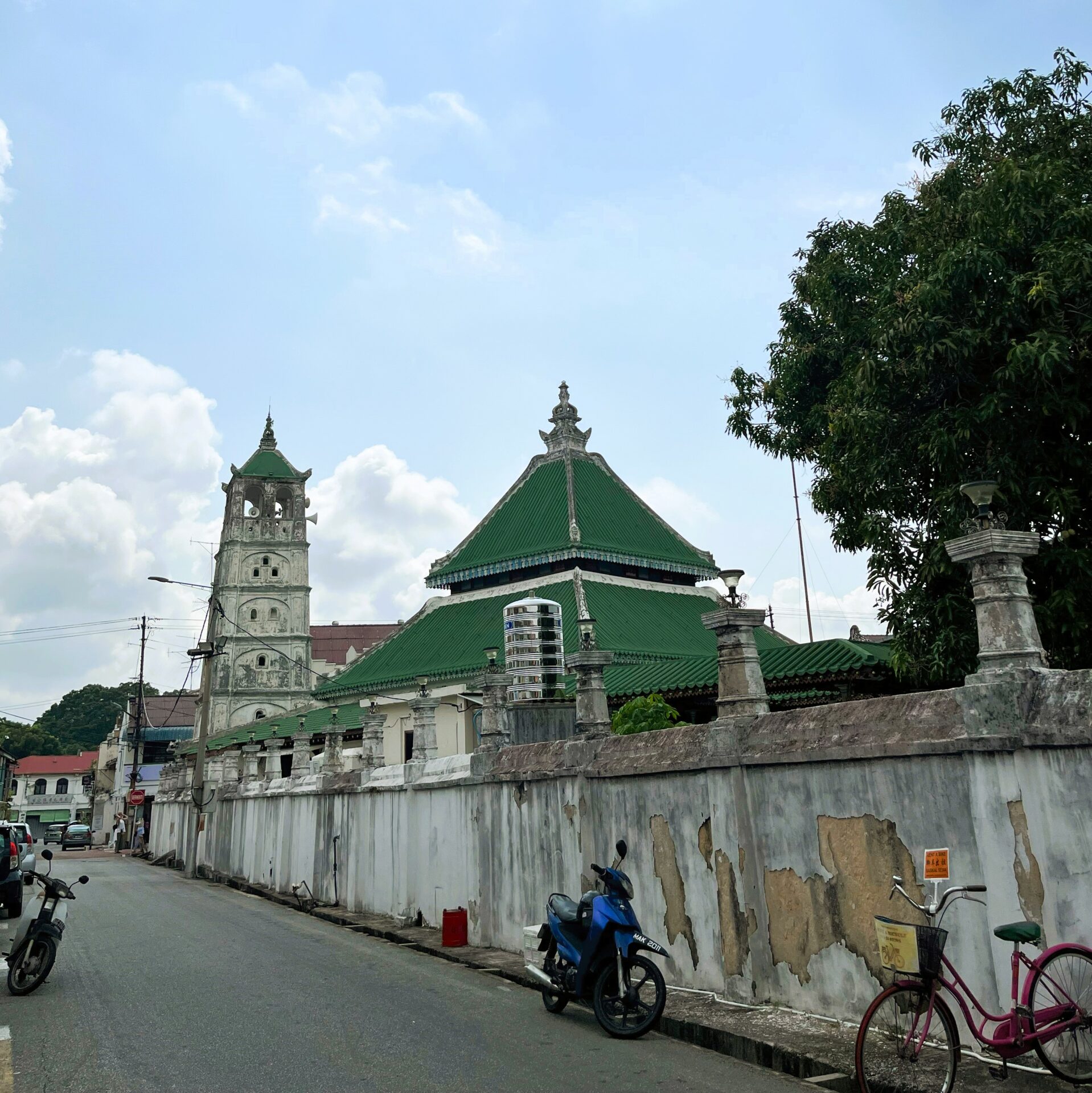
(the Hindu temple is missing in the pictures)
Jonker Street Night Market
The night market runs from Friday to Sunday, from 6pm to midnight, although the Sunday market is smaller than the other days.
Here you’ll find a wide variety of food stalls (see also the post Where to eat in Malacca) and many other stalls selling souvenirs, clothes, toys, jewellery, accessories, and more. There’s something for everyone.
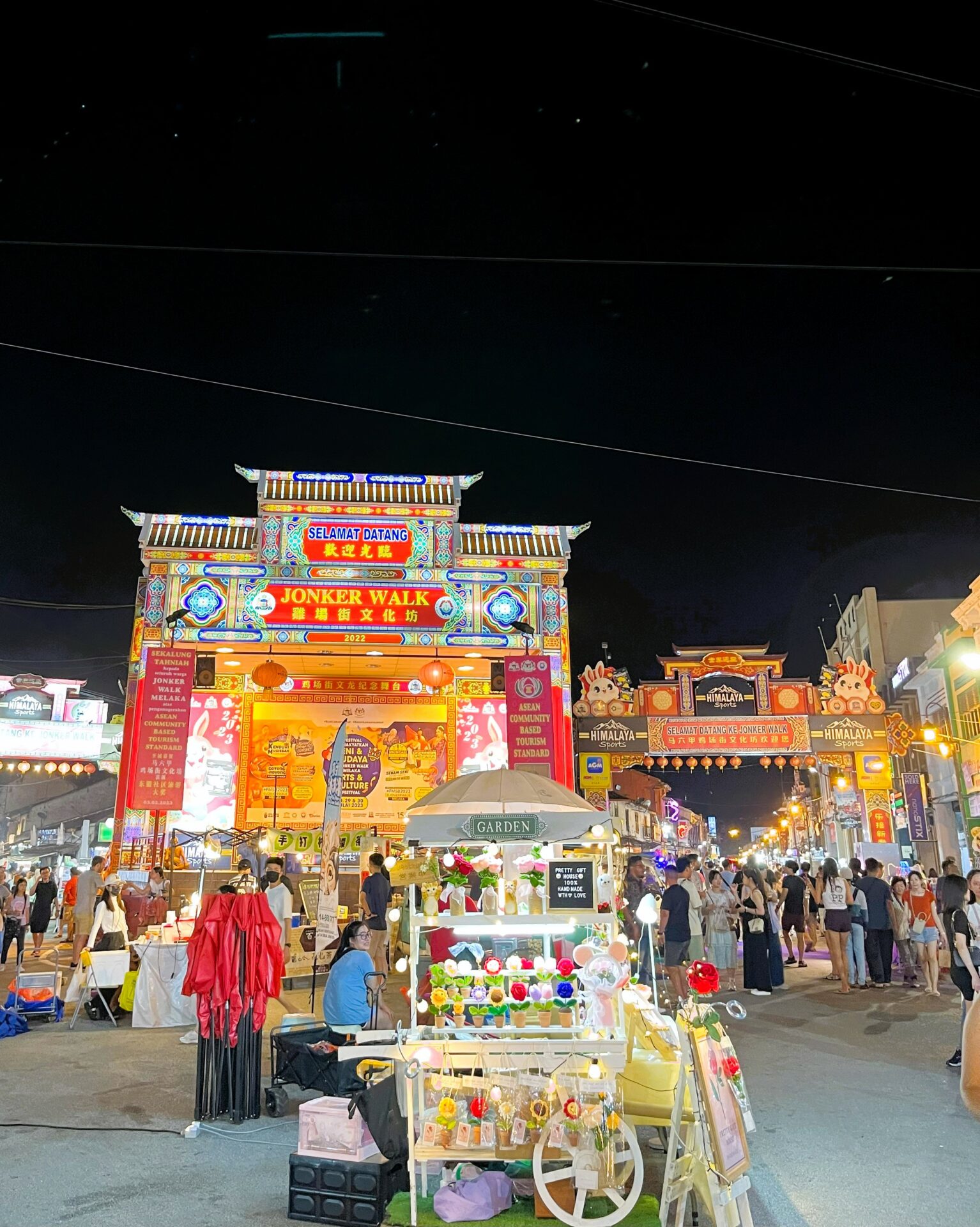
Portuguese Settlement
The descendants of the Portuguese who settled in Malaysia in the 16th century still live in Malacca in an area known as the Portuguese Settlement.
This place is about a 15-minute drive from the centre of Malacca, and here, you can find many restaurants serving fish and seafood dishes. As we didn’t visit, I can’t really say if it’s worth the trip.
Check out all the posts about our stay in Malacca, and don’t forget to read the post with all you need to know before travelling to Malaysia.
